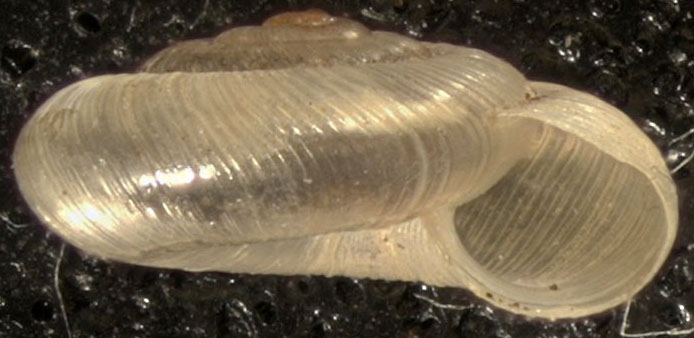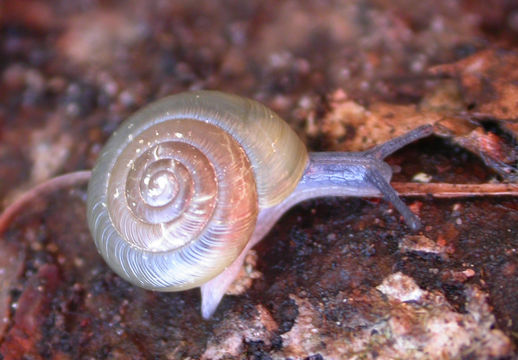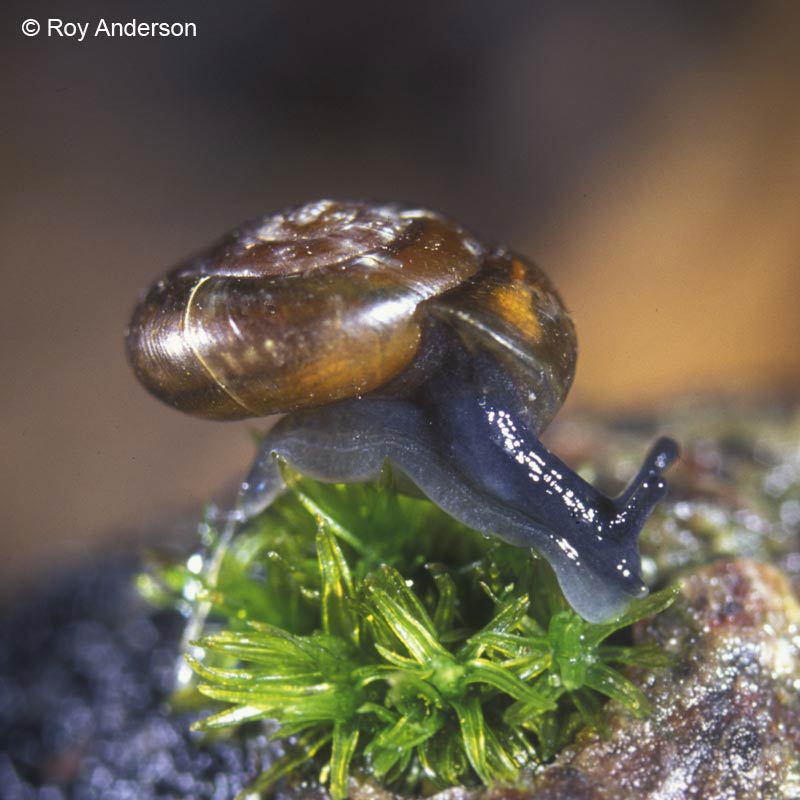
Classification
Domain: Eukarya
Eukaryotic cells contain membrane-bound organelles, and genetic
information is enclosed within a nuclear envelope.
Kingdom:
Animalia/Metazoa
These organisms are multicellular and heterotrophic, meaning that they
require consumption of other organisms for nutrition.
Phylum:
Mollusca
This is a very diverse group of organisms, including octupuses, mussels,
snails, cuttlefish, and chitons. Molluscs have a coelom
(fluid-filled cavity within the mesoderm), a soft body with a “head” and
“foot” region, and often a hard covering or shell over their bodies
Class:
Gastropoda
This diverse taxa contains marine, freshwater, and terrestrial slugs and
snails.
Order:
Stylommatophora
Terrestrial snails and slugs that are adapted to breathe air comprise
this taxon, which includes four-fifths of all land snails (Wade, et
al., 2001)
Family:
Zonitidae
These are true glass snails, with mostly glassy and translucent shells
(Nordseick, 2011).
Genus:
Zonitoides
Zonitoides is a
taxon of small, air-breathing land snails, specifically with flattened,
umbilicated shells. Zonitoides
species have been located throughout the United States (all states
but Nevada), most provinces of Canada, eastern and northern Asia,
and parts of Europe (White-McLean,
2011). Besides
Zonitoides limatulus, other
species in this genus include Z. elliotti,
Z. aboreus, Z. excavatus, Z.
jaccetanicus, Z. nitidus, and
Z. sepultus (Encyclopedia of Life, 2011).
Z. aboreus and Z. nitidus are species within this genus that have been more widely studied and published.
Species:
Zonitoides limatulus
Commonly referred to as Dull Gloss, this snail has a dull whitish
colored shell of 4.3 to 5 mm wide (Wisconsin
DNR, 2011).
Pictured above: Zonitoides arboreus, the quick gloss snail.

Zonitoides nitidus, the black gloss snail shown above, is a close relative of Z. limatulus.

Zonitoides elliotti also has characteristics that are very similar to the dull gloss snail.
Learn how to distinguish Z. limatulus from similar snails by its Physical Appearance.
Classification information recovered from the Encyclopedia of Life, 2011 and Hickman, et al., 2009.
